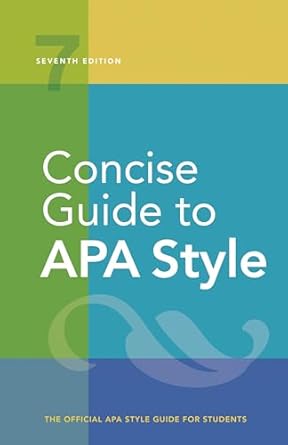[toc]
effective lists academic writing guide
Concise Guide to APA Style: 7th Edition (OFFICIAL)
Page 116 Review
Mastering Lists in Academic Writing: A Deep Dive
This excerpt from an academic writing guide delves into the nuances of creating effective lists.
Mastering list construction is crucial for clarity and impact in scholarly work.
Let’s dissect the provided guidelines:
Parallelism: The Foundation of Effective Lists
The text emphasizes the importance of parallelism:
“PUNCTUATION, LISTS, AND ITALICS should be syntactically and conceptually parallel (see Section 2.24 for a more detailed discussion of parallelism).”
This means each item in a list should follow the same grammatical structure and convey a similar type of information.
Failure to maintain parallelism can lead to confusion and weaken the impact of your message.
The Serial Comma: A Matter of Style and Clarity
The excerpt addresses the use of the serial comma (also known as the Oxford comma):
“When a list within a sentence contains three or more items, use a serial comma before the final item (see also Section 4.3).
Participants were similar with respect to age, gender, and ethnicity.”
The serial comma, while sometimes debated, generally enhances clarity, especially in complex lists.
It prevents ambiguity and ensures that the reader correctly interprets the relationships between the list items.
Semicolons for Complex Lists
When individual list items contain commas, semicolons become essential for separation:
“However, if any item in a list of three or more items already contains commas, use semicolons instead of commas between the items (see Section 4.4).
We were interested in how students describe their gender identities and expressions; their perceptions of emotional and physical safety on campus, including whether and how such perceptions impact their gender expression; and their perceptions of trans-affirming versus trans-negative reactions among fellow students and faculty.”
This rule prevents nested commas from creating a confusing jumble.
Semicolons provide a stronger visual and structural break, ensuring readability.
Lettered Lists: Subtle Emphasis
Lettered lists offer a way to identify elements within a sentence or paragraph:
“Within a sentence or paragraph narrative, identify elements in a series with lowercase letters in parentheses when doing so will help readers understand the separate, parallel items in a complex list.
Lettered lists may also be used to draw attention to the items—but not as much attention as a numbered or bulleted list.
Use commas or semicolons between items as described in Section 4.11.
Our sample organization used a waterfall model that featured the following sequential stages: (a) requirements analysis, (b) specification, (c) architecture, (d) design, and (e) deployment.
We tested three groups of (a) low scorers, who scored fewer than 20 points; (b) moderate scorers, who scored between 20 and 50 points; and (c) high scorers, who scored more than 50 points.”
Lettered lists provide structure and help readers follow complex ideas, but they carry less visual weight than numbered or bulleted lists.
They’re ideal for internal lists within paragraphs.
Numbered Lists: Presenting Sequential Information
Numbered lists are best suited for presenting steps or conclusions:
“Use a numbered list to display complete sentences or paragraphs in a series (e.g., itemized conclusions, steps in a procedure).
Use a lettered or bulleted list rather than a numbered list if the items are phrases.
Use the numbered list function of your word-processing program to create the numbered list; this will automatically indent the list as well.
Select the option for an Arabic numeral followed by a period but not enclosed in or followed by parentheses.
Capitalize the first word after the number (and the first word in any subsequent sentence), and end each sentence with a period or other punctuation as appropriate.”
The text is teaching when to use a numbered list and how to format it correctly.
Numbered lists are the most formal and visually prominent type of list, making them ideal for outlining procedures or presenting key findings.
The guidelines emphasize consistent formatting, including capitalization and punctuation.
Key Takeaways
In conclusion, this excerpt highlights the importance of deliberate list construction in academic writing.
From parallelism to punctuation and choosing the right list format (lettered vs. numbered), each decision contributes to the clarity, readability, and impact of your work.
By following these guidelines, writers can effectively organize and present information, enhancing the overall quality of their academic papers.
Buy full ebook for only $18: https://www.lulu.com/shop/american-psychological-association/concise-guide-to-apa-style-7th-edition-official/ebook/product-rmzpq54.html?page=1&pageSize=4
Effective Lists Academic Writing Guide
Read more: Improve Writing Flow: Tips & Techniques

